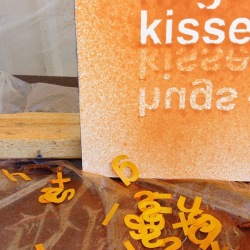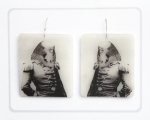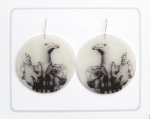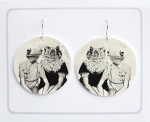 Just before my seventh birthday I began to lose motor control of my eyes and couldn’t bend or turn my neck. I had headaches, the kind where the inside of my head sounded exactly the noise you hear during a sonogram. A rhythmic liquid pounding drowned out everything else for days and then weeks on end.
Just before my seventh birthday I began to lose motor control of my eyes and couldn’t bend or turn my neck. I had headaches, the kind where the inside of my head sounded exactly the noise you hear during a sonogram. A rhythmic liquid pounding drowned out everything else for days and then weeks on end.
Growing up in a rugged farming family in rural Maine, there was generally a ‘rub some dirt on it’ attitude toward illness, but when it was clear that no amount of dirt was going to resolve this situation I was taken to Central Maine Medical Center in Lewiston, the same hospital where my brothers and I had been born. It was clear right away even to my little kid brain that the doctors thought something really bad was happening and that they had no idea what it was or what to do about it.
I was admitted, injected with blue dye and x-rayed. Blood was drawn and my mom promised me a Cabbage Patch doll if I was brave. I was driven to Portland and then Boston to be scanned with increasing levels of detail and expertise. Nothing was explained to me at the time, but I know now that they were looking for a brain tumor and couldn’t find one. All of the symptoms were consistent and worsening daily: I started to have trouble seeing at all; sounds and sunlight were excruciating; speaking became difficult. But none of the glowing images of my brain showed a cause.
One morning a tray of pancakes was delivered to my bedside in the Lewiston hospital, but placed out of reach on a nearby table. A bearded man named Dr. Belding came in with a small team of nurses and opened a heavy text book at the foot of my bed. I was instructed to lie on my left side, facing away from the window. With my future Cabbage Patch in mind, I did as I was told despite catching a glimpse of Dr. Belding handling a enormous needle. He told me to pull my knees up to my chest, but I couldn’t physically do it. At his prompt, a couple nurses pulled me into a fetal position and I cried out. The extra pressure on my brain and spine hurt in a way that I don’t have words for even now. It hurt. It was scary.
I cried and tried to get away from the nurses holding my legs. My mom started yelling. From behind me Dr. Belding yelled back and she was pushed out of the room. More nurses came running in and he said. “Hold her down. Hold her still.” Four or five adult nurses piled onto me and did just that.
Under their combined weight I gasped “I can’t breathe! I can’t breathe!”
Without missing a beat, the nurse nearest my head snapped “If you couldn’t breathe, you couldn’t talk.”
Her logic technically made sense, and for one moment it shocked me still. In the next moment Dr. Belding guided his needle into my spine, and it was as if a cedar fence post was being twisted through my back and threaded out my belly button. In the next moment the pressurized spinal fluid caused a popping sound as it broke the equipment and spurted into the bed, floor, and wall.
The recently surfaced video of the NYPD’s fatal assault of Eric Garner has caused me to remember this childhood experience anew, mostly because I have shouted those same words to an authority figure and also had my physical and emotional distress ignored. It is inaccurate (and not my intention) to say that our experiences are alike; I did not die and my abuse did not occur as a culmination of a long and awful history of cultural mistreatment based on race. However the presence of class discrimination in both instances is worth noting. Throughout this medical mess my low-income, farming family was talked down to, disregarded, and outrightly harassed by the medical and administrative staff associated with my care. At one point DHHS threatened to take me away from my single mother after she cancelled an appointment for my fourth spinal tap so I could have a break and go to a birthday party like a normal kid.
The fear of not being able to breathe, of being restrained and harmed by authority figures has been with me for nearly thirty years now. My heart is broken for Eric Garner because I still feel a little of the fear he felt during that fatal choke hold back in July.
In October, before I was aware of Garner’s death, I began a series of pepper spray paintings, which I call my pepper spray affirmations. I originally thought of them as attempts to achieve well-being and trust in the face of abuses of power and the accompanying worries. They increasingly are looking like illustrations of PTSD to me– that feeling of conflicting, simultaneous flight and fight responses to everyday life.
I will just leave them here for now and see where this process takes me. Updates to follow.

























